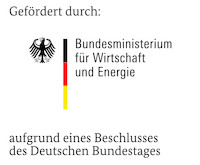
M2M@Work: Leistungsfähigkeit von Internetzugangstechnologien für zuverlässige M2M-Anwendungen
Initial situation
The automatic exchange of information between electronic devices and machines is called usually Machine-To-Machine (M2M) communication. There are many fields of application from water-based systems (e.g. pumping stations), weather reconnaissance, production process monitoring until control of power grids and fleet management systems. Due to geographic distances the Internet is often used as communication network to connect the machines. As the usage of IP-based communication systems for M2M applications increases, additional questions arise regarding the reliability and the risks of the used technologies and protocols. In case of failures, it is often unclear, if the problem was caused by the protocol, the network, the component or by the configuration. The cellular networks have an increasing importance at the access networks because they offer a high coverage and low price data plans. Furthermore, interfaces for the integration of end devices are available in the meantime. For example, in the sector of public utilities (i.e. energy, gas, water) distributed meter readings, water supply wells, pumps or transfer stations are coupled to a central control center by cellular networks. The used protocols for data transmission have been used in dedicated lines, yet. But in cellular networks data or connection losses are frequent.
Aims
In this project the behavior of established protocols over cellular networks with regard to the reliability should be investigated. In this context it will be identified under which conditions the applications based on the protocols will still function reliably. Another task is to create adaptive application which adopt their behavior according to the data connection.
Realization
To assess the protocols and the application behavior the performance of cellular networks will be investigated. Therefore, a test connection in an existing cellular network under different conditions (rural/urbane environment, 2G/3G/4G network) will be built up. So, long-term testing can be performed to identify influences like diurnal fluctuations or dependencies on the weather. On the other hand, a laboratory test environment for different cellular network technologies will be set up to perform tests under repeatable conditions.

